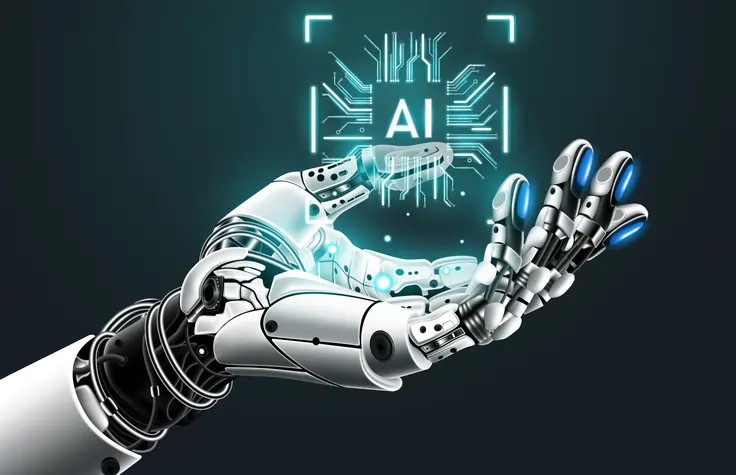
The reality of AI in procurement: Are we ready to turn the opportunities into reality?

Artificial Intelligence (AI) is taking the world by storm, with IT leaders and the C-suites expressing significant interest in the opportunities it offers across all business areas – with procurement no exception.
AI promises a range of benefits for procurement, including greater efficiency and improved decision-making. By performing more administrative tasks, it can free procurement professionals up to focus on strategic priorities, an essential at a time when there is increasing pressure for businesses enhance their operational prowess while also optimising spend. Business leaders see integrating AI is an important step forward in these revenue and cost-cutting approaches, with nearly half of senior leaders agreeing that AI will impact their bottom line in 2024 and 56% prioritising use cases that immediately impact revenue or cost[1].
However, significant questions also remain around the use of this technology in reality.
The practical applications for AI in procurement
Despite the hype, specific AI use cases and opportunities have yet to be determined across many different businesses and industries. However, for procurement, the value-add opportunities for AI models are already emerging across the entire lifecycle. We are witnessing an initial wave of automation, including the streamlining of tasks like document generation and data analysis, which leads to increased accuracy, improved efficiency, and reduced operational costs.
Take finding suppliers. AI-powered supplier discovery platforms match procurement needs with a vast database of suppliers. From there, AI can suggest potential suppliers based on past interactions and performance metrics. AI can also perform dynamic supplier evaluation, analysing suppliers based on various parameters including delivery times, quality, pricing, and customer satisfaction. AI expedites and increases the frequency of supplier searches, making ongoing recommendations regarding potential new suppliers, as well as improving the quality of supplier selections by leveraging data effectively.
Procurement leaders can also utilise AI models to accelerate the creation, distribution, and analysis of documents including Requests for Proposals (RFPs), Request for Quote (RFQs) and Requests for Information (RFIs) – therefore accelerating and improving the accuracy of the sourcing and comparison process.
Beyond increasing efficiencies, this speaks to a big concern for procurement leaders: attracting and retaining the right talent, at a time when many companies note capacity and capability problems within their teams. Organisations either don’t have enough people or their existing teams don’t have the right skillset needed to elevate Procurement. AI-enabled systems can be vital in this situation by enabling teams to continuously monitor contract performance, KPIs, deadlines, deliverables, and compliance metrics. AI could liberate procurement professionals from repetitive responsibilities, allowing them to focus on high-value tasks such as strategic planning and creative problem-solving. As AI and large language model (LLM) integrations extend beyond task automation and provide insights on market trends, supplier performance, and risk assessments, this will empower Procurement to make swift data-driven decisions, enabling a shift towards a role emphasising emotional intelligence, nuanced decision-making, and relationship management. This transition will be a key factor in attracting and retaining the right talent in the team.
The use cases for AI within procurement are evident – but technology and data can only take you so far. The human elements of building and maintaining relationships with suppliers and cross-functionally within the business will remain crucial. Procurement should therefore focus on using AI as an ally to facilitate better supplier outcomes and navigate complex negotiations, with human emotional intelligence as the main driver. Ultimately, the best outcomes will be formed through a combination of both human and artificial intelligence, and, as with any transformation, the right procedures and training need to be put in place to make this happen.
The roadblocks to AI adoption
But new technologies always bring questions, fears, and misconceptions – and AI is no different. Can we trust the process? Will a product follow the right protocol, regulations, and ethical practices? Currently, only 39% of people are willing to trust AI systems[2]; yet trust must be built up before we can capitalise on AI-driven recommendations.
A common misconception about AI is that this technology will replace humans and the work they do. However, rather than replace, AI will augment the capabilities of procurement teams and is even expected to create 133 million new jobs by 2030[3].
When it comes to utilising the power of AI, however, procurement leaders must be aware of potential biases and inaccuracies that may be present in AI models and how this can influence decision-making and recommendations. Incomplete, inconsistent, or poor-quality data can limit AI’s effectiveness, which could lead to biased supplier selections, misjudgement of market trends, or incorrect predictions about supplier performance. Inaccurate or biased AI-driven decisions in procurement can also have ethical implications, impacting supplier relationships, fairness, and trust within the supply chain ecosystem. Ensuring the ethical and regulation-abiding (for example, the EU AI Act[4]) use of AI in procurement, especially for data privacy and supplier relationships, is a challenge that business leaders must carefully navigate when implementing AI into their organisation. To minimise organisational risks, businesses must critically evaluate AI solutions during the selection process and set up regular reviews to ensure continuous alignment with industry-standard practices.
A successful AI future
For procurement leaders to implement and effectively deploy AI, their teams must have their systems and governance in order before implementation. AI is not a magic wand; to reap meaningful benefits, solid groundwork is needed ahead of implementation. This requires both robust data validation and a thorough cleansing process to minimise biases and inaccuracies in the output. AI models will operate at their best if the internal processes of the business are set up for the system to automatically track, analyse, and provide insights autonomously.
For a business function particularly focused on driving efficiency, cost optimisation, and strategic decision-making, AI has the potential to be a game-changer. Further advancements in AI could see the enhancement of intricate negotiations, market trend forecasting, and sustainability initiatives. The use of AI-driven insights will propel procurement towards a less reactive and more strategic role. However, for this to happen, procurement teams must have the right set-up and processes in place.
So, the question is… are we ready to propel procurement into new territories through the synergy of human intelligence and AI prowess? Buying better is closer than we think: AI’s impact is likely to be vast and, if embraced and correctly deployed, procurement could be at the heart of it.
[1] Procurement Magazine – https://procurementmag.com/articles/why-2024-will-be-pivotal-for-ai-in-procurement
[2] Trust in Artificial Intelligence Global Report 2023 – https://policy-futures.centre.uq.edu.au/files/16650/Trust%20in%20AI%20Global%20Report_2023_UQ.pdf
[3] 27 AI statistics and trends in 2023 – https://www.hostinger.co.uk/tutorials/ai-statistics#:~:text=In%202023%2C%2035%25%20of%20companies,create%20new%20services%20and%20products
[4] EU AI Act summary: https://www.europarl.europa.eu/news/en/headlines/society/20230601STO93804/eu-ai-act-first-regulation-on-artificial-intelligence


